Discover the Architectural Marvel of the Blue Mosque in Istanbul touring the historic site (updated 2023)
The Blue Mosque in Istanbul is a breathtaking masterpiece that stands in Istanbul’s cultural and architectural treasures. The Blue Mosque is a testament to the city’s rich architectural and cultural heritage.
Officially known as the Sultan Ahmed Mosque, this iconic landmark has been captivating visitors for centuries with its majestic domes, elegant minarets, and intricate tilework. Step into a realm of serenity and grandeur as we embark on a journey to explore the fascinating history, stunning craftsmanship, and spiritual significance of the Blue Mosque. Get ready to be mesmerized by its timeless beauty and immerse yourself in the captivating ambiance of this architectural gem that has come to symbolize the vibrant soul of Istanbul.
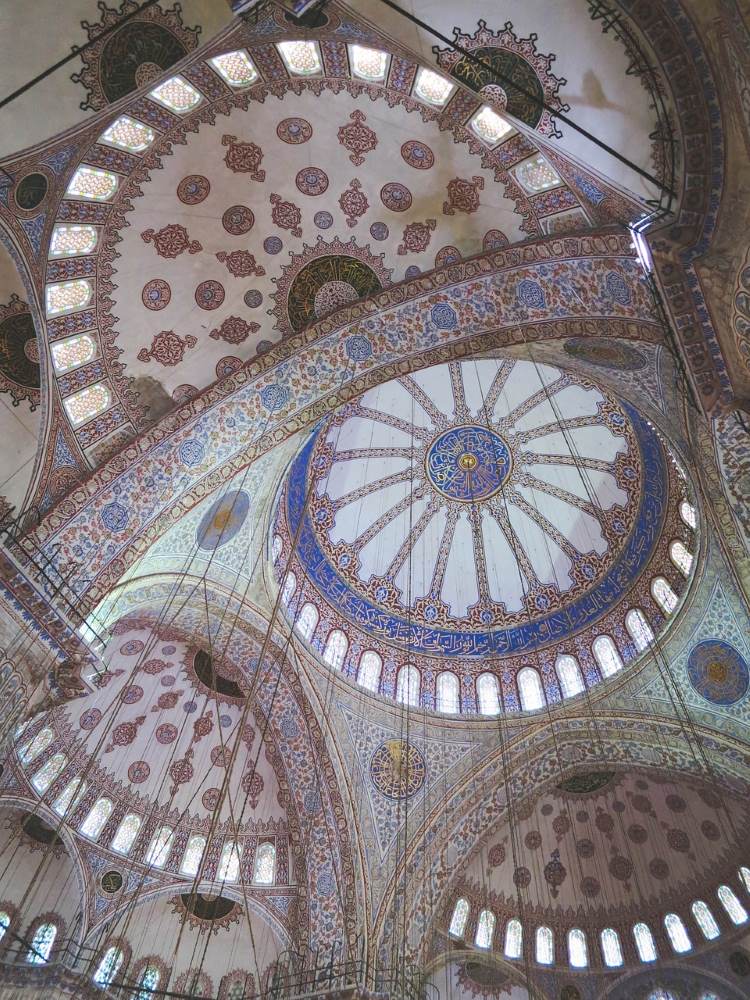
Why visit the Blue Mosque at Istanbul
Visiting the Blue Mosque in Istanbul is an enriching and captivating experience for several compelling reasons:
1. **Architectural Marvel:** The Blue Mosque is a masterpiece of Ottoman architecture. Its stunning design, including the central dome and intricate blue-tiled interior, showcases the peak of Ottoman artistic achievement.
2. **Rich History:** This mosque was built during the early 17th century and is steeped in history. It stands as a symbol of Istanbul’s rich cultural heritage and the legacy of the Ottoman Empire.
3. **Spiritual Experience:** The Blue Mosque is still an active place of worship. Visitors have the opportunity to witness the daily rituals and connect with the spiritual atmosphere of this sacred space.
4. **Cultural Insight:** Exploring the mosque offers valuable insights into Islamic culture and traditions, fostering a deeper understanding of the diverse cultural tapestry of Istanbul.
5. **Photographic Delight:** The mosque’s elegant architecture, the striking blue tiles, and the play of light create a photographer’s paradise. It’s an ideal spot to capture stunning images.
6. **Central Location:** The Blue Mosque is conveniently located in the historic Sultanahmet district, making it easy to combine a visit with other top attractions like the Hagia Sophia and the Topkapi Palace.
7. **Interfaith Harmony:** It symbolizes the harmonious coexistence of different faiths in Istanbul, as it is situated right across from the Hagia Sophia, a former church turned mosque turned museum.
8. **Peaceful Atmosphere:** Despite its popularity as a tourist destination, the mosque exudes a sense of serenity and tranquility, making it a peaceful retreat from the bustling city.
In summary, the Blue Mosque is a must-visit for anyone traveling to Istanbul, offering a blend of architectural beauty, historical significance, cultural richness, and spiritual resonance that makes it a truly unforgettable experience.
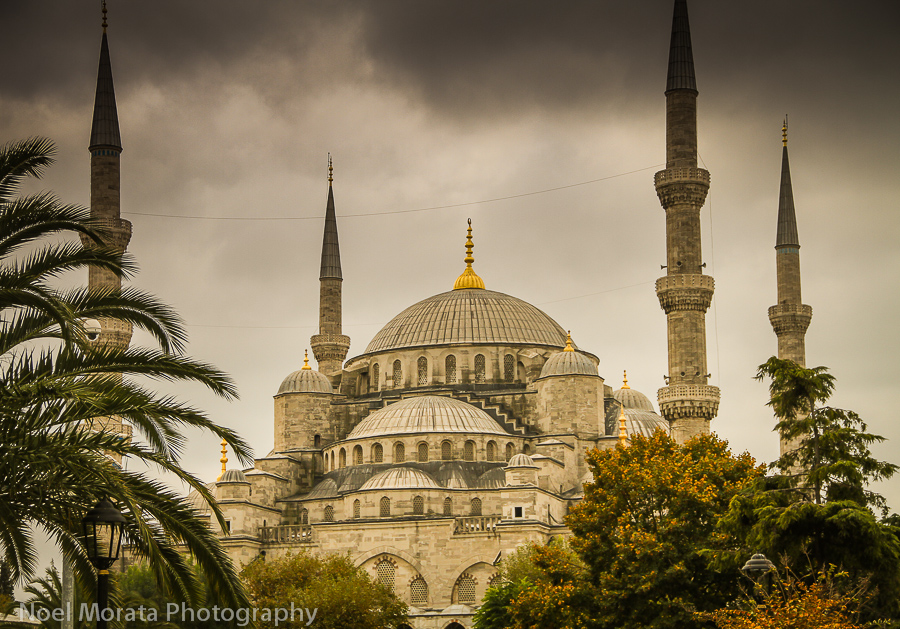
Historic Travel photo sites: The Blue Mosque in Istanbul
The Blue Mosque in Istanbul is also known as Sultan Amed Mosque was built from 1609 to 1616 . This historic mosque is well-known for its blue tiles on the exterior domes of the structure consisting of one main dome, eight smaller domes and six minarets. Built during the reign of Amed 1 on the site of the previous grand palace of the Byzantine emperiors, the mosque faces directly to the Ayasofya, the main Byzantine cathedral which was converted into a mosque, and at that time was the most worshipped mosque, when the Blue Mosque was eventually built to be the official mosque of the ruling sultan’s family.
This historic structure sits in the most historic sites of Istanbul in an area called Sutlanahmet. The entire Peninsula surrounding Sultanahmet was later dedicated as a Unesco World Heritage site in 1985 containing many of the important historic monuments and buildings in Istanbul. For more detailed information on the Blue Mosque, you can visit the wikipedia page here.
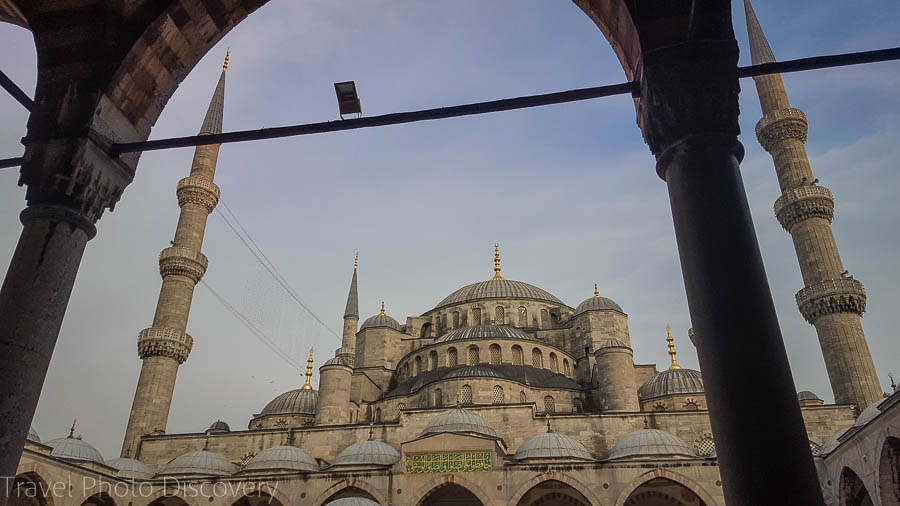
A brief history about the Blue Mosque in Istanbul
The Blue Mosque, known as the Sultan Ahmed Mosque, is an architectural masterpiece in Istanbul, Turkey. Built during the early 17th century (1609-1616) during the reign of Sultan Ahmed I, it is renowned for its stunning blue-tiled interior, which gives the mosque its colloquial name.
The mosque’s construction was a response to the grandeur of the Hagia Sophia, aiming to surpass it in magnificence. Architect Mehmet Agha achieved this with a design that included a central dome, six minarets (towers), and cascading domes and semi-domes. The interior is adorned with thousands of blue tiles, creating a serene and captivating atmosphere.
The Blue Mosque holds historical significance as a place of worship and a symbol of Ottoman architecture. It remains an active mosque today, welcoming both worshippers and tourists to admire its beauty and experience the rich history of Istanbul.
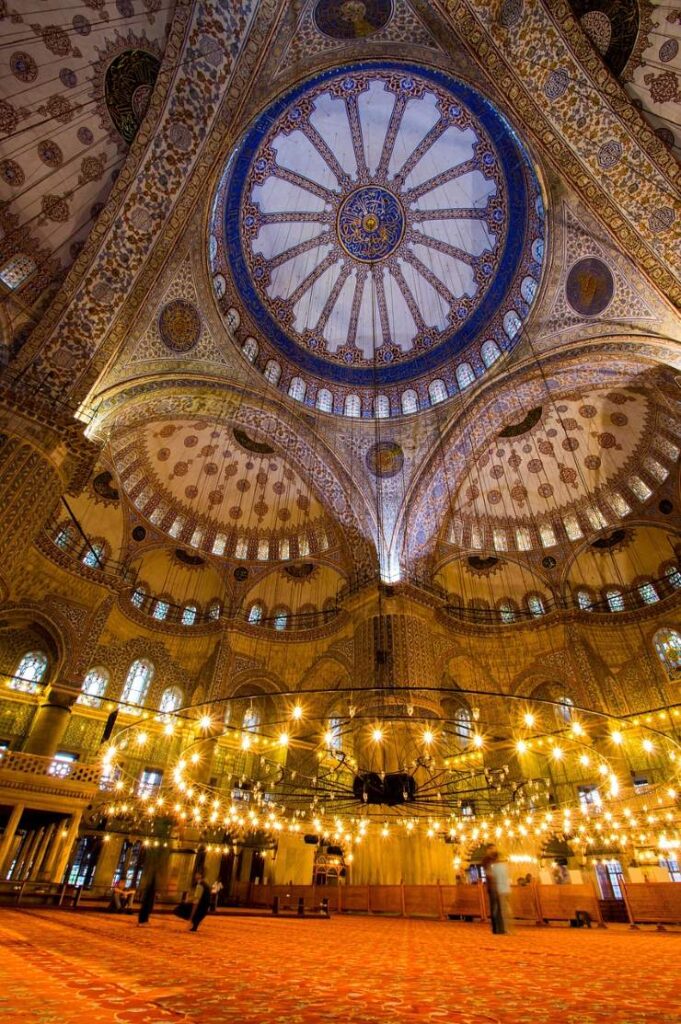
Explore the elaborate interiors of the Blue Mosque
The interiors of the Blue Mosque in Istanbul are a true marvel, captivating visitors with their intricate details, exquisite craftsmanship, and a sense of divine tranquility. As you enter the mosque, you’ll be greeted by a vast open space adorned with stunning blue İznik tiles that line the walls, giving the mosque its famous nickname. These tiles showcase intricate floral patterns, geometric designs, and calligraphic inscriptions, creating a mesmerizing symphony of colors and shapes.
The central dome, adorned with delicate stained glass windows, soars high above, supported by elegant columns and semi-domes that add a sense of grandeur to the interior. Bathed in soft, ethereal light, the space evokes a feeling of serenity and spirituality, inviting visitors to pause and reflect.
The mihrab, a beautifully crafted niche indicating the direction of Mecca, is intricately decorated with marble and mother-of-pearl inlays, adding a touch of opulence to the prayer space. The intricately carved wooden pulpit, known as the minbar, serves as a platform for sermons and stands as a testament to the skilled craftsmanship of the period.
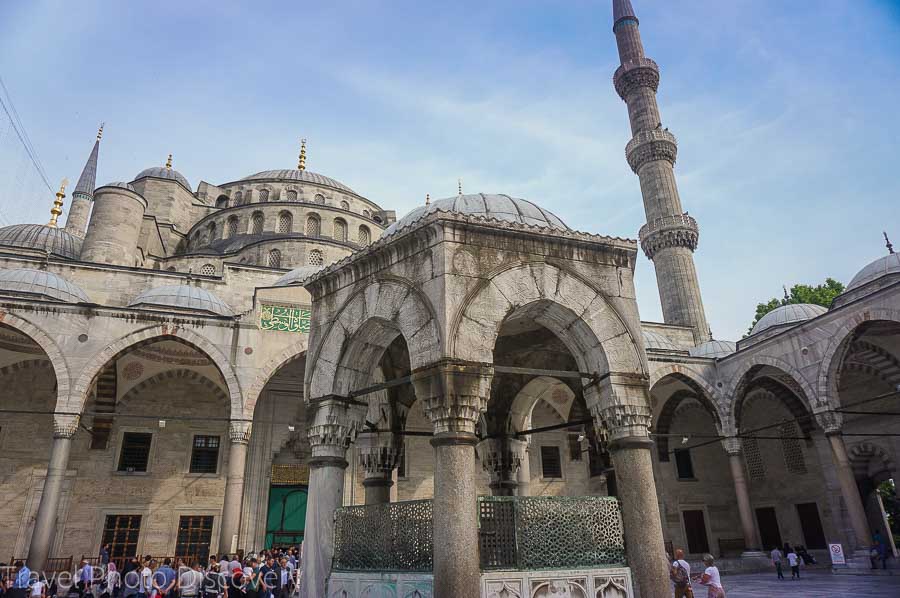
How to visit the Blue Mosque of Istanbul
To visit the Blue Mosque in Istanbul and fully immerse yourself in its beauty, follow these steps:
Dress appropriately: As the Blue Mosque is an active place of worship, it’s important to dress modestly out of respect. Men should wear long pants and shirts that cover their shoulders, while women should wear clothing that covers their legs, shoulders, and hair. Scarves are usually provided at the entrance if needed.
Check the visiting hours: The Blue Mosque is open to visitors outside of prayer times. It’s advisable to check the mosque’s official website or contact the local tourism office to confirm the visiting hours, as they may vary.
Plan your visit strategically: The Blue Mosque can get crowded, especially during peak tourist seasons. Consider visiting early in the morning or later in the afternoon to avoid large crowds and ensure a more tranquil experience.
Enter through the correct entrance: The Blue Mosque has separate entrances for tourists and worshippers. Look for signs indicating the tourist entrance, which is usually on the side of the mosque.
Follow the guidelines: Upon entering the mosque, follow any instructions provided by the mosque staff or volunteers. Be mindful of maintaining a quiet and respectful atmosphere, as prayers may be taking place.
Take off your shoes: Before entering the prayer hall, you’ll be required to remove your shoes. Shoe storage areas or plastic bags are usually provided for this purpose. It’s recommended to wear or carry clean socks for comfort.
Explore the mosque: Once inside, take your time to explore the beautiful interiors of the mosque. Admire the intricate tilework, study the calligraphy, and soak in the peaceful ambiance. Remember to be respectful of worshippers who may be praying.
Photography guidelines: Photography is usually allowed inside the Blue Mosque, but it’s important to be mindful of the worshippers and to avoid using flash or disturbing others. Always follow any photography guidelines or restrictions that may be in place.
Seek knowledge and ask questions: If you have questions about the mosque’s history or significance, don’t hesitate to approach the mosque staff or volunteers. They are often happy to share information and provide insights into the Blue Mosque’s cultural and religious significance.
By following these steps, you can ensure a respectful and fulfilling visit to the Blue Mosque, immersing yourself in its architectural splendor and embracing the spiritual ambiance of this iconic landmark.
Check out these other posts to visiting Istanbul in Turkey
Things to do in Istanbul in 24 hours
7 Sensational things to do in Turkey
Details to visiting the Blue Mosque
Visitors to the Blue Mosque can visit daily except during prayer times.
Visitors are asked to not visit during this time 45 minutes prior to the call to prayer and 15 minutes afterwards. Fridays are restricted until after 2:30 pm
Admission is free with donations accepted.
Visitors are required to wear long pants or skirts and ensure their shoulders are covered.
Additionally, women should have their heads covered.
It’s customary for everyone to remove their shoes; you’ll be provided with a plastic bag to carry them while you explore the interiors.
Please refrain from using flash photography, maintain a quiet demeanor, and show respect for those who are in prayer.
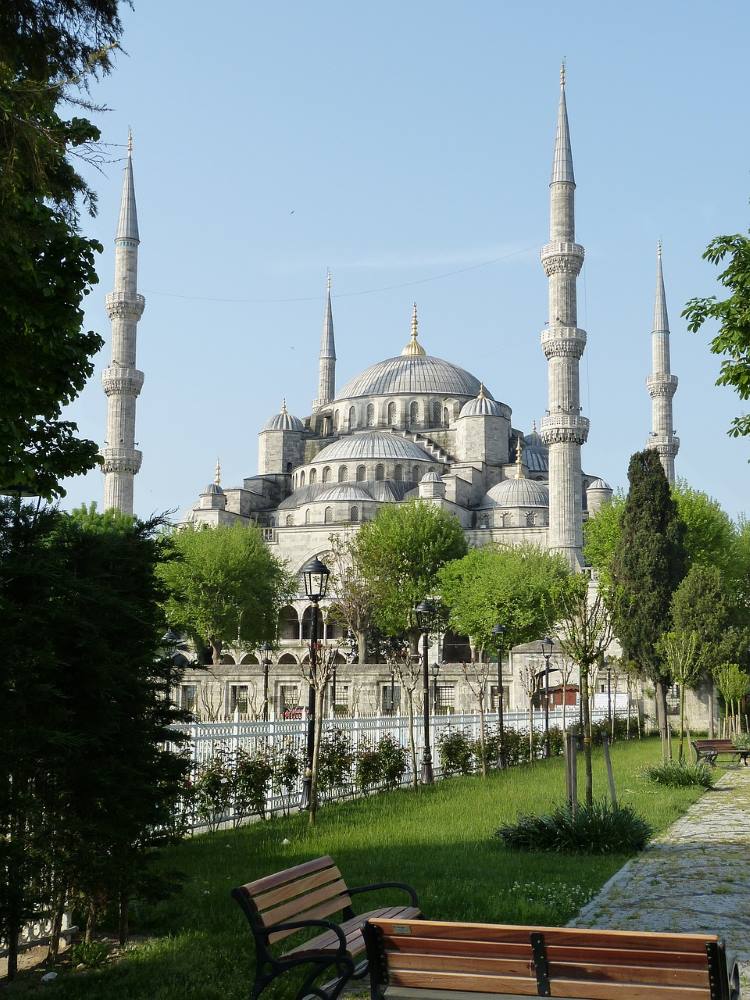
Conclusion to visiting the Blue Mosque in Istanbul
Visiting the Blue Mosque in Istanbul is a truly enriching experience that allows you to delve into the rich cultural and architectural heritage of the city. As you step into this magnificent mosque, you are greeted by a breathtaking display of intricate tilework, elegant domes, and a serene atmosphere that invites contemplation and awe.
The Blue Mosque offers a glimpse into the spiritual traditions and artistic brilliance of the Ottoman Empire, showcasing the skillful craftsmanship and attention to detail that went into its creation. It is not only a place of worship but also a symbol of Istanbul’s cultural identity and a testament to its historical significance.
Visiting the Blue Mosque requires respect and adherence to proper etiquette, including dressing modestly and observing the guidelines set by the mosque. By doing so, you honor the traditions and religious significance of this sacred place, ensuring a meaningful and respectful experience.
If you enjoyed viewing this post Blue Mosque in Istanbul, please do share it with any of the social media buttons located below or on the side, thanks so much.


That looks so dramatic with the clouds behind it, but it’s not as blue as I had expected. Is it bluer on a sunny day? I’m also impressed by the number of minarets. Would love to see this myself some day.
Beautiful. Those clouds add something very mysterious!
Noel, You know I love the Blue Mosque, well Istanbul….well Turkey! Great shot and post-processing!
Amazing shot! It looks so dramatic with the cloudy skies! I’d love to see this gorgeous place in person.
Love the colours too. Istanbul is such a fabulous city for a photographer.
You’ve captured the magic of Istanbul, Noel! We were just there and this brought back warm memories.
The light in this shot is just awesome! Great capture!
Absolutely gorgeous picture of the Blue Mosque – I haven’t been there myself but my husband was lucky enough to see it when he got stuck in Istanbul during the layover at the time of the volcanic ash cloud!
Great picture… I love the colors…
Beautiful … but why is it called blue? Is there an historical reason? Just being nosy.
Beautiful!
Thanks so much for the comment, appreciate it.